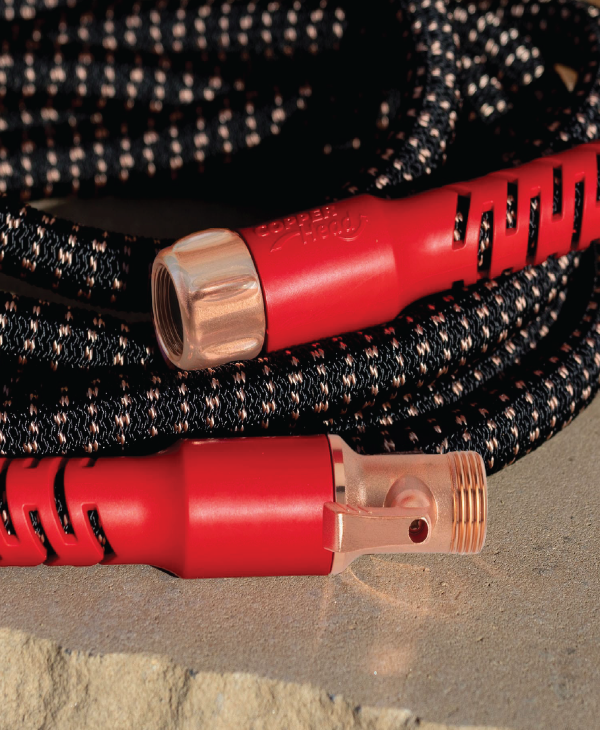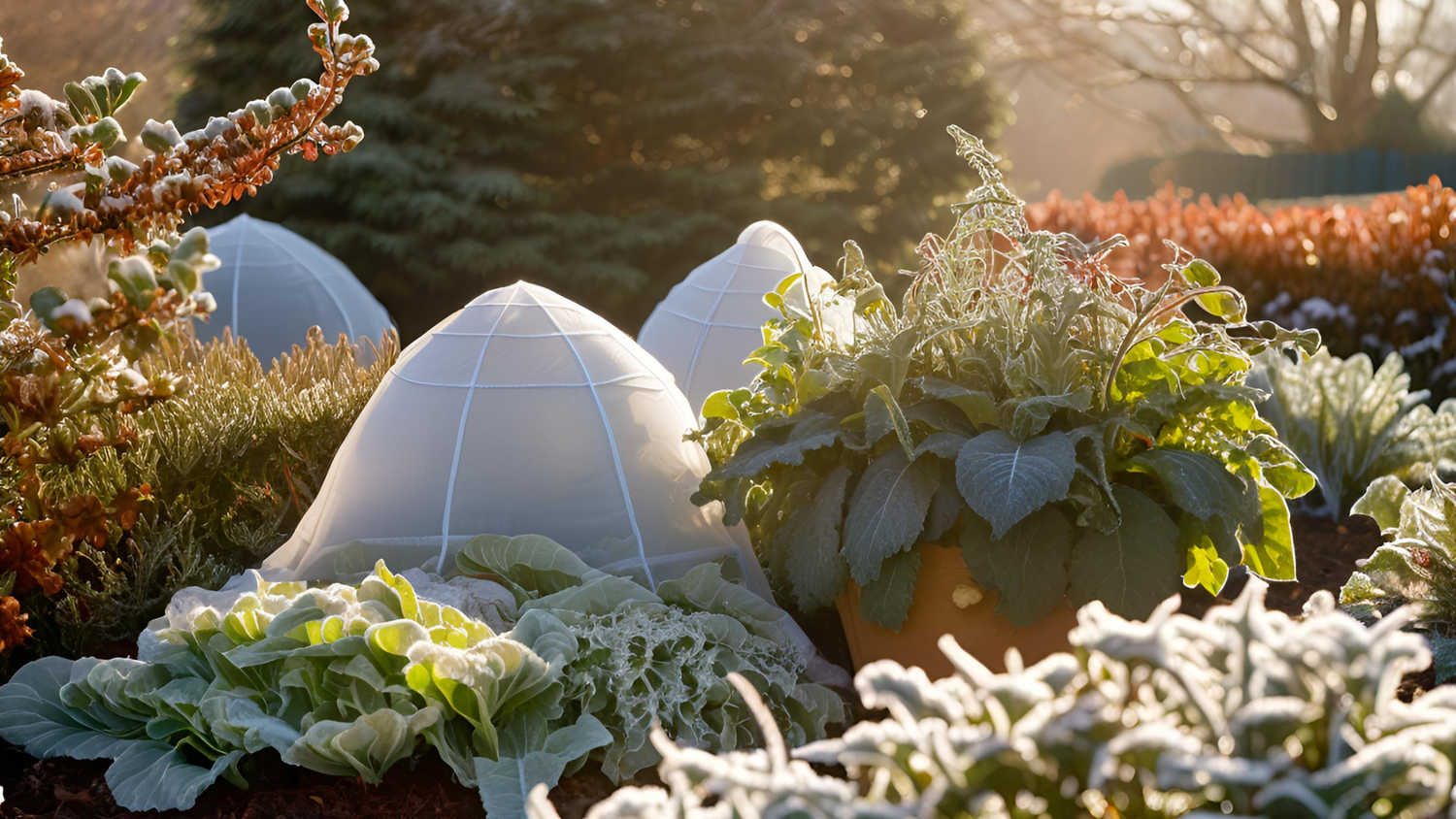As the vibrant days of summer gently fade, the crisp embrace of autumn serves as a timely reminder that it’s time to start thinking about winterizing your garden. As any gardener knows, each season brings unique challenges, and with winter on the horizon, the focus shifts to plant cold protection. This task, while labor-intensive, ensures that your landscapes and beloved plantings come through the winter months unscathed and ready to bloom afresh come spring.
In this comprehensive guide, we'll delve into the essentials of winterizing your garden, focusing on plant survival and care during cold months. From indispensable fall gardening tips to tools like the Pocket Hose Copper Bullet that can simplify your garden winterization process, read on to equip yourself with the necessary knowledge to shield your greenery from the chill of winter.
Understanding Your Garden's Needs
Before diving headfirst into winterizing tasks, it's fundamental to understand your garden's specific needs. Different plants have varying levels of tolerance to cold weather. Some are hardy and can survive even the most bitter winters, while others might need a bit of extra care and protection.
Assess Your Plants
- Identify Vulnerable Species: Identify which plants in your garden require the most protection. This generally includes tropical plants, tender perennials, and younger plants that have yet to establish themselves fully.
- Zone Considerations: Understanding your USDA plant hardiness zone is crucial because it provides insight into what plants can thrive in your local climate through the winter months.
- Survey Health: Sick or weakened plants will struggle even more during the harsh winter months, so it is essential to ensure your plants are in robust health before the cold sets in.
Preparing the Garden
Fall is an ideal time for some prep work. The tasks you undertake now will help in cold weather plant protection and set you up for success in the spring.
Clean Up
- Remove Debris: Fallen leaves, dead plants, and other debris can harbor pests and diseases. Cleaning these out reduces the risk of future problems.
- Weed Thoroughly: Weeds compete with plants for nutrients, and during winter, when resources are scarce, they can cause significant stress to your garden.
Amend Soil
- Composting and Mulching: Composting provides nutrients that will settle into the soil over the winter, ready for spring. A layer of mulch not only retains soil moisture but also serves as insulation against temperature extremes.
- Test Your Soil: Autumn is an excellent time to have your soil tested and amended based on pH and nutrient levels. Making adjustments now allows amendments to settle during the dormant season.
Essential Techniques for Plant Cold Protection
Protecting your plants can sometimes require drastic measures. However, a few smart strategies can enhance your plants' chances of surviving the winter.
Mulching
Mulching is the most critical step in plant cold protection. A thick layer of mulch acts as a blanket, insulating the roots from the cold. Organic materials like straw, bark, or pine needles provide this insulation and break down to enrich the soil.
- Apply Mulch Late Fall: Waiting until late fall ensures that the soil temperature is stable, reducing risks of winter damage.
- Depth Matters: For most plants, aim for a 2-4-inch layer. Do not pile mulch against plant stems, as this can lead to rot.
Covering Plants
When temperatures plummet, some immediate protection can be vital.
- Row Covers and Frost Cloths: These can be draped over your plants to fend off frost.
- Cloche or Cold Frame: These options provide a more permanent solution and can be especially beneficial for vegetables like lettuce and spinach, extending their growing season.

Watering Wisely
As paradoxical as it sounds, well-hydrated plants are better equipped to withstand the cold.
- Deep and Infrequent: Opt for deep watering sessions rather than frequent shallow ones, which can freeze more easily in cold temperatures.
One effective tool for watering during this prep stage is the Pocket Hose Copper Bullet. This expandable hose makes it easy to reach the farthest corners of your garden without the fuss of a heavy, cumbersome traditional hose. Its durability ensures it stands up to the fluctuating autumn temperatures, helping you to winterize your garden efficiently with minimal hassle.
Pruning and Cutting Back
Strategic pruning is a great fall gardening tip to aid in winterization.
- Timing is Key: Prune plants after they've gone dormant. Cut back perennials, remove deadwood, and trim overgrown branches to prevent winter damage from heavy snow accumulation.
- Be Selective: Not all plants benefit from fall pruning. Research your plant types to avoid over-pruning, which could expose new growth to winter damage.
Protecting Specific Plant Types
Different plants have different winter needs. Here are some focused tips on a few popular garden varieties:
Trees and Shrubs
- Wrap Young Trees: Wrap tree wraps around young saplings to protect them from frost and sunscald, damage caused by sun exposure to frozen bark.
- Anti-Desiccant Spray: Applying this to evergreens can help them retain moisture through the dry winter months.
Perennials
- Cut Back Foliage: Once perennials have gone dormant, cutting back foliage can reduce the chance of pests and diseases overwintering.
- Divide and Transplant: Fall is the optimal time for dividing perennials, giving the roots time to establish before the ground freezes.
Bulbs
- Lift Tender Bulbs: Not all bulbs can survive winter in situ. Consider lifting and storing tender bulbs like dahlias over the cold months.
- Mulch Over Bulbs: A layer of mulch over hardy bulbs can add protection and ensure a vibrant spring bloom.
Vegetables and Herbs
- Cover Crops: Planting cold-hardy cover crops can protect the soil while enriching it as it decomposes.
- Protect with Cloches: Use cloches or row covers to extend the growing season and protect more tender vegetable plants from frost.
Preparing Tools and Infrastructure
As you take steps to protect your garden, remember to maintain and prepare your tools and garden infrastructure.
Clean and Store Tools
- Prevent Rust: Clean, oil, and store your tools correctly to avoid rust and damage over the winter.
Irrigation Systems
- Drain Hoses: Ensure hoses like the Pocket Hose Copper Bullet are drained to prevent damage from freezing temperatures. Its flexibility and durable construction make it a breeze to store.
- Blow Out Sprinkler Systems: If your system isn’t self-draining, remove all water to prevent freezing and cracks.
Making the Most of the Dormant Season
While your garden rests and recharges, winter is an opportunity to plan and prepare for future gardening endeavors.
Reflect and Plan
- Journal: Keep a garden journal to reflect on the past season's successes and failures. Make notes about what worked, what didn’t, and what you hope to change.
- Research: Use the winter months to research new plants, techniques, or layouts you want to try once the weather turns milder.
Indoor Gardening
- Houseplants: If outdoor gardening isn't possible, focus on indoor plants. Not only can they brighten a winter home, but they also allow you to continue honing your green thumb during the off-season.
- Seed Starting: Consider starting seeds indoors for an early start to your growing season. Cozy setups with grow lights can give you a months-long head start when spring finally arrives.
While winterizing your garden may seem daunting, breaking it down into manageable tasks and approaching it strategically ensures it emerges in spring as beautiful and bountiful as ever. From critical mulching and pruning strategies to leveraging tools like the Pocket Hose Copper Bullet for efficient irrigation, these steps provide a foundation for protecting your beloved plants.
By implementing these comprehensive fall gardening tips, you'll shield your garden from the bitter cold and lay the groundwork for a lush, thriving landscape in the coming growing season. Winter is not a pause but a valuable period for preparation that ensures your garden blooms splendidly in the thaw of spring.





Leave a comment
This site is protected by hCaptcha and the hCaptcha Privacy Policy and Terms of Service apply.